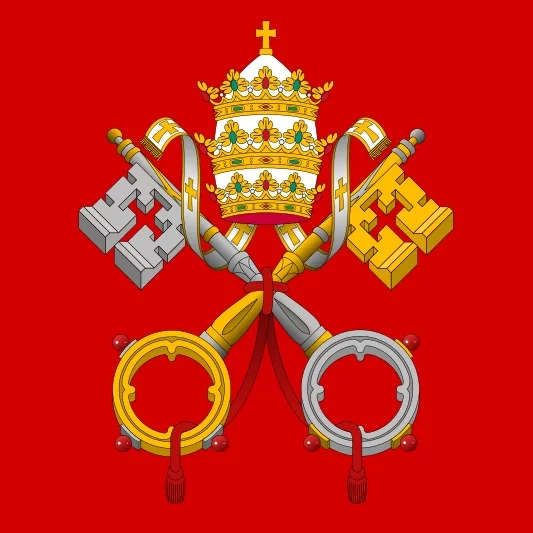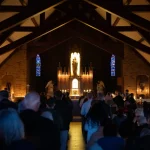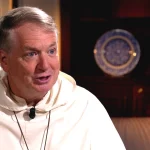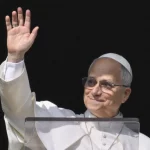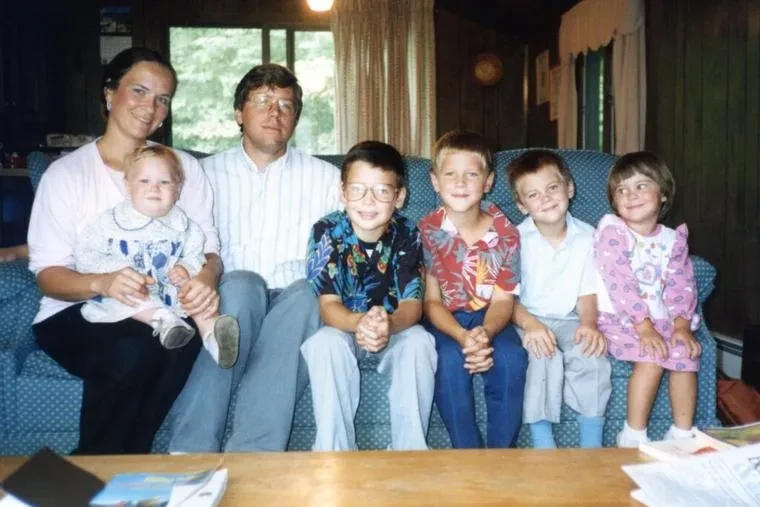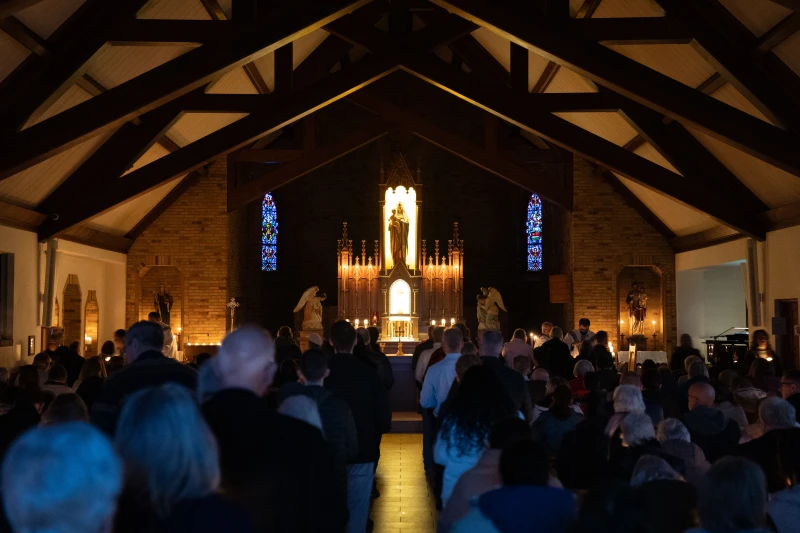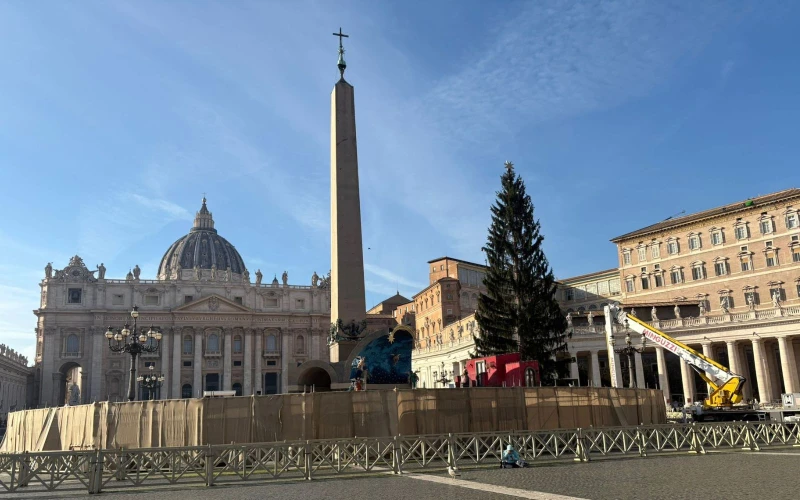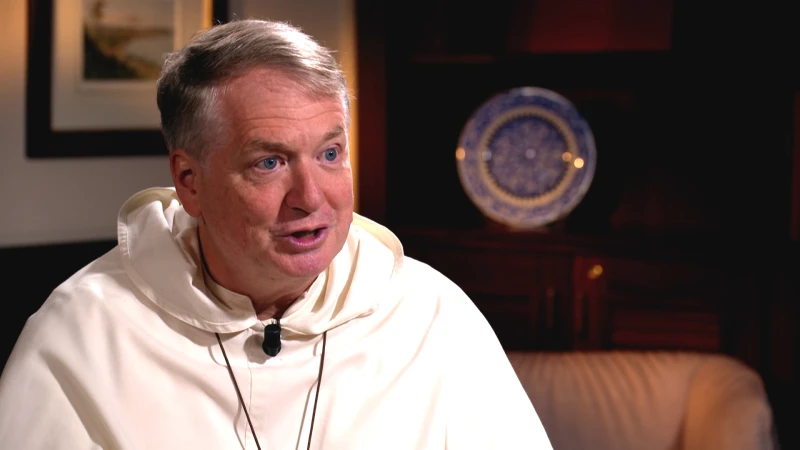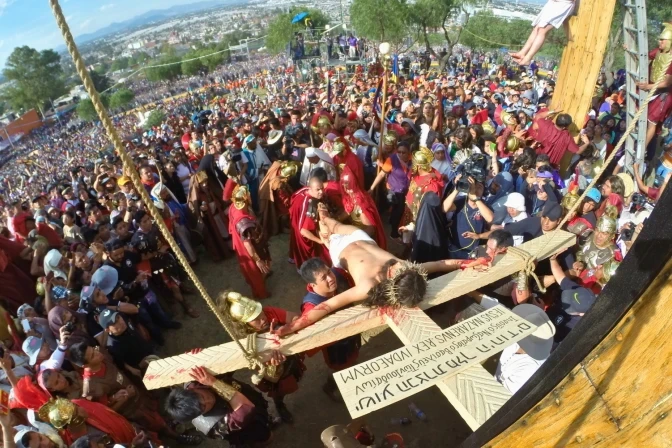
Ruth Pakaluk with her husband and five of their children. / Credit: Photo courtesy of the Pakaluk family
National Catholic Register, Nov 19, 2025 / 08:00 am (CNA).
To kids in the neighborhood east of Interstate 290 in Worcester, Massachusetts, Ruth Pakaluk was the mom who baked brownies and blondies for everyone after school and whose home was the starting point for games and fun.
“She was like the ‘block mom,’” her husband, Michael Pakaluk, an author and professor at the Busch School of Business at The Catholic University of America, told the National Catholic Register, CNA’s sister news partner.
To the Vatican’s Dicastery for the Causes of Saints, Ruth Pakaluk’s life merits further investigation to see whether someday the Church should declare her a saint.
The pro-life activist, Catholic convert, mother of seven, and Harvard graduate died of breast cancer in 1998 at 41. Now, the Diocese of Worcester, where she was living at the time of her death, has the approval of the Vatican’s saints’ dicastery to undertake a formal inquiry into her life, the next step along the path to a possible canonization.
Cardinal Marcello Semeraro, prefect of the dicastery, referred to Pakaluk as a “servant of God” in a letter to the diocese dated Sept. 29 authorizing the inquiry.
The dicastery’s “nihil obstat” (“nothing stands in the way”) means that supporters of her cause have established her “reputation for sanctity” and “the importance of the cause for the Church,” as set forth in the 1983 Vatican document Normae Servandae In Inquisitionibus Ab Episcopis Faciendis In Causis Sanctorum.
Canonization, in which the Church solemnly declares that a person is in heaven, is likely a long way off, if it happens, and would eventually require two miracles attributed to her intercession. The next step is for the U.S. bishops to vote on her cause. If they approve it, the formal diocesan inquiry can begin.
From atheist to Catholic
Ruth Van Kooy was born on March 19, 1957, in northern New Jersey and grew up there, mostly in Norwood, near the New York state line. Half Dutch, half Scottish, she attended a Presbyterian church as a child.
She went to Northern Valley Regional High School in Old Tappan, where she was, according to a website about her life, a straight-A student who played the oboe, violin, and bass drum. She also played field hockey, sang in regional choirs, and “and produced, directed, and acted in numerous plays and musicals,” the website says. She graduated in 1975.
She was an atheist (“or near to it,” her husband writes) and an enthusiastic supporter of legal abortion when she met Michael Pakaluk, a fellow sophomore at Harvard College, during the fall of 1976. He had been raised in a nominally Catholic home but also considered himself a nonbeliever.
Even so, both were committed to pursuing the truth, which led them eventually to Christianity.
They married the summer after their junior year, at a Presbyterian church. But by their last semester at Harvard, they had begun attending Mass at a Catholic church. Ruth entered the Church on Christmas Eve in 1980, while Michael went to confession and took up life as a Catholic again. A few years later, both became supernumeraries of Opus Dei.
In 1982, while Michael was studying for a doctorate in philosophy at Harvard, Ruth — by then a young mom with a baby boy — helped start a pro-life group at Harvard. She joined the board of directors of Massachusetts Citizens for Life in 1984, and she eventually served as its president from 1987 to 1991.
Admirers remember her as an effective debater on college campuses, giving what Boston College philosophy professor and Catholic apologist Peter Kreeft called, in his introduction to a 2011 book of her letters that her husband edited called “The Appalling Strangeness of the Mercy of God,” “the most persuasive, irresistible, and winsome pro-life talks I have ever heard.”
During the early 1990s, Ruth organized opposition to a Planned Parenthood sex-education curriculum proposed for Worcester public schools, which helped persuade the Worcester School Committee, the locally elected board that oversees the school district, to reject the curriculum. In 1993, a year after the committee vote, she also recruited a like-minded mom to run for a school committee and managed her successful campaign.
Dwight Duncan, a friend of the family who is the postulator of her cause, responsible for conducting what the Vatican calls “thorough investigations” into her life, said Ruth rarely put herself forward.
“One of the things about Ruth that strikes me in retrospect is that she was kind of low-key. She wasn’t assertive in personal dealings. She wasn’t showy or aggressive. She wasn’t flashy,” Duncan said. “But if she was front and center, like a debate or a speech or something, she was a strong, powerful woman.”

40-year-old carpets
In 1988, the couple and their then-four children moved from Cambridge to Worcester, about 45 miles to the west, where Michael had gotten a job teaching at Clark University. They lived “in a poor neighborhood in a home with 40-year-old carpets and no hot running water,” as Michael describes it in an online timeline of Ruth’s life.
Max Pakaluk, her second child, now 42, told the Register that his family’s house was a magnet for children in the neighborhood, many of them living in single-mother homes, who were drawn by the baked goods Ruth made and liberally distributed.
Michael Pakaluk said Ruth was disturbed by the learning gap she saw developing between her own children, who read often, and the neighborhood children, who didn’t, so she required kids who visited the home to read a book before they could go outside.
In summertime, she’d cram 10 or so kids into an Oldsmobile station wagon for the less-than-a-mile trip to Bell Pond in Worcester, where the kids would play, Max recalled.
Grace Cheffers, a friend who met Ruth at a pro-life parish event during the early 1990s, said Ruth was approachable and friendly but also creative in figuring out ways young moms and their families could meet.
Ruth organized gatherings of mothers and children at Notre Dame Cemetery in Worcester, where the families would say the rosary and the kids would run around while the moms went on walks and talked.
Cheffers recalled that the prevailing culture at the time suggested that women should be out working and having a career rather than just being a stay-at-home mom, but Ruth dismissed such ideas.
“Even though she was very well-educated and highly intelligent, she found joy in staying at home and taking care of her kids. And she was very unapologetic about it,” Cheffers said.

Cheffers, who has 11 children, said she learned parenting tips from Ruth.
“She was never scandalized by anything her children did. She was clear-eyed about the human condition,” Cheffers said. “Kids can do all sorts of things, and it doesn’t help to act shocked and upset. That just makes it worse for them.”
Cheffers said she also learned from Ruth how to articulate better why she did what she did.
“She was a deep thinker. She chose her words carefully. She was a natural teacher. She had great formation, and she really knew her faith,” Cheffers said.
One example: When Cheffers once asked Ruth why she went to daily Mass, Ruth immediately offered two reasons: one personal, related to the crib death of her infant son Thomas in November 1989, and one universal.
“She told me that going to Mass and receiving daily Communion was the closest she could be to Thomas while she was still on this earth,” Cheffers said.
The second reason: “She said that the two most important events in human history — the Incarnation and redemption — occur at every Mass. Why would you want to be anywhere else?”
Ruth often went to the 12:10 p.m. daily Mass at the Cathedral of St. Paul, after which she would stay up to an hour praying, said Bishop Richard Reidy, who now leads the Diocese of Norwich, Connecticut, but at the time was rector of the Worcester cathedral and the Pakaluk family’s pastor.
Ruth served as director of religious education for the cathedral parish. While Catholic religious education at the time was notoriously light on substance, Ruth made sure the kids learned doctrine, and she made it fun. She developed what she called “Quiz Game,” a parish-wide competition for kids in the program that eventually drew students from outside the parish.
“She ran a dynamic program, emphasizing the substance of the faith and the joy of living it,” Reidy said.
She led parish trips on the cheap for up to 30 kids to New York City and New Hampshire, among other places, combining culture, hiking, and religion.
Max Pakaluk described his mother as “someone who wanted to do things.”
“She didn’t have a lot of tolerance for laziness. I don’t think she understood laziness. We’re all here for so much time. There’s so many good things you could be doing. Why would you be wasting time?” Max said. “She was always trying to get people to do things.”
No complaints
Admirers of Ruth say that while many of her pursuits might seem ordinary — wife, mother, volunteer — she lived them in an extraordinary way.
Saints not killed for the faith as martyrs are those who “give outstanding testimony to the kingdom of heaven … by the heroic practice of virtues,” according to St. John Paul II’s apostolic constitution Divinus Perfectionis Magister.
So what were Ruth Pakaluk’s virtues?
Friends and family describe, among other things, an intense prayer life, trust in God through difficulties, interest in the welfare of others, gratitude, and a refusal to complain about her troubles.
In October 1991, Ruth was diagnosed with breast cancer, which eventually spread to other parts of her body. She lived with it about seven more years.
But her son Max said he doesn’t remember life changing much until his mother became bedridden not long before she died.
“Mostly I think she tried not to make a big deal about it. She just tried to act like there was nothing wrong,” Max said.
Along with her kids, she climbed Mount Washington, the steep, 6,000-foot-plus highest peak in New England notorious for its sudden weather changes, with a metal rod in her leg.
“But almost as remarkable as that, about two months before she died, she climbed down Mount Washington,” Michael Pakaluk said by text. “She took the shuttle up, but she climbed down via the Lion Head Trail. This is a very rugged, difficult trail. When I climbed it two years ago, I was scratching my head and wondering how she ever did it.”
She continued making trips with the family to the March for Life in Washington, D.C., in January, including one in 1998, the year she died, not long after a round of chemotherapy.
Fran Hogan, now 79, a commercial real estate lawyer and former president of Massachusetts Citizens for Life, walked with Ruth during the march that year. Hogan, who was carrying a heavy pocketbook, didn’t know about Ruth’s debilitating treatment.
“It was over my left shoulder. And I complained bitterly about how heavy that pocketbook was,” Hogan said. “Ruth just laughed. She never complained. Never said a word.”
“And we got to the Supreme Court building and she collapsed.”
Ruth was hospitalized.
People who knew her say Ruth accepted her suffering without questioning it.
“When she knew she had terminal cancer, it’s amazing how calmly they took all of that, and I guess that’s the faith behind it,” said her mother-in-law, Valerie Pakaluk, 92, who is planning to serve as secretary-treasurer of the nonprofit foundation that will direct Ruth’s cause of canonization.
“I think there’s no question that the way she handled her illness was extremely heroic,” her son Max said.
Her attitude, Max said, can be summed up this way: “I am not going to give any indications that I’m sick. I am not going to be the center of attention here. I am not going to be causing difficulties here. Most of all, I am not going to be the reason my kids don’t have a normal life.”
She was unsentimental about her status, realizing that with six children, the youngest of whom was 5 years old, her husband would soon need help.
About a month before she died — on Sept. 23, 1998 — Ruth encouraged her husband Michael to remarry after she departed, and she even focused on a likely candidate — “calmly suggesting,” as The Catholic Free Press of the Diocese of Worcester put it in May 2019, that Harvard graduate student Catherine Hardy, whose parents were family friends — and whose middle name is Ruth — “might be the one to raise her children.”
Here’s how Michael describes it: “She took a deep breath and said, ‘I have for a long time thought that Catherine Hardy would make a good wife for you, and now I see that she has moved to Cambridge.’”
Catherine Pakaluk, as she is now known, married Michael in August 1999. She is an economist and associate professor at The Catholic University of America, where Michael, 67, is a full professor of political economy. Catherine and Michael, an occasional contributor to the Register, now have eight children of their own.
Michael and Ruth currently have 32 grandchildren.
A saint?
So was Ruth Pakaluk a saint?
Supporters of her cause who spoke to the Register were careful to say that they don’t want to declare her one before the Church decides through its formal process.
But they drop hints.
At her wake, her husband took a box of funeral prayer cards for Ruth and touched them to her body — which, in the event she is canonized, would make the prayer cards third-class relics.
“I always had this conviction — it’s strange — that she would be a canonized saint,” Michael Pakaluk, who said he is cooperating with Ruth’s cause but purposely not directing it, told the Register. “Obviously you can’t presume the judgment of the Church.”
Reidy also stopped short of calling her a saint without denying that she might be.
“I’m very delighted at the recent steps that have gone on, and we trust in Holy Mother Church,” Reidy said. “But she’s a great example, somebody to be held up.”
“If Ruth Pakaluk isn’t in heaven,” he said, “I am a little discouraged for the prospects of the likes of me.”
Twenty-seven years after Ruth’s funeral Mass, which Reidy celebrated before about 1,000 people, he recited from memory during a recent interview with the Register his description of her during his sermon: “To give life and to defend it. To have faith and to spread it. To be gifted, and to freely give of those gifts.”
This story was first published by the National Catholic Register, CNA’s sister news partner, and has been adapted by CNA.
